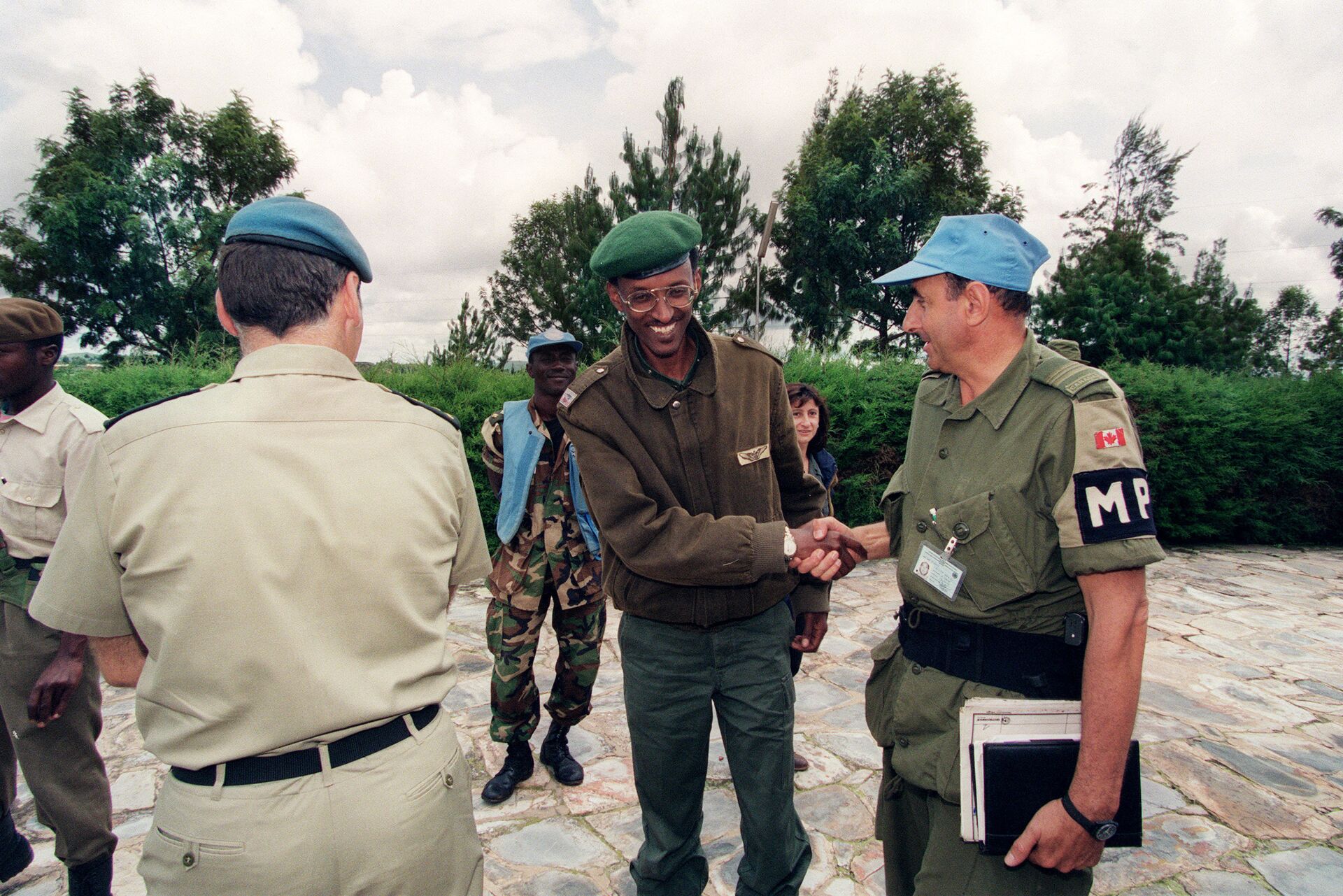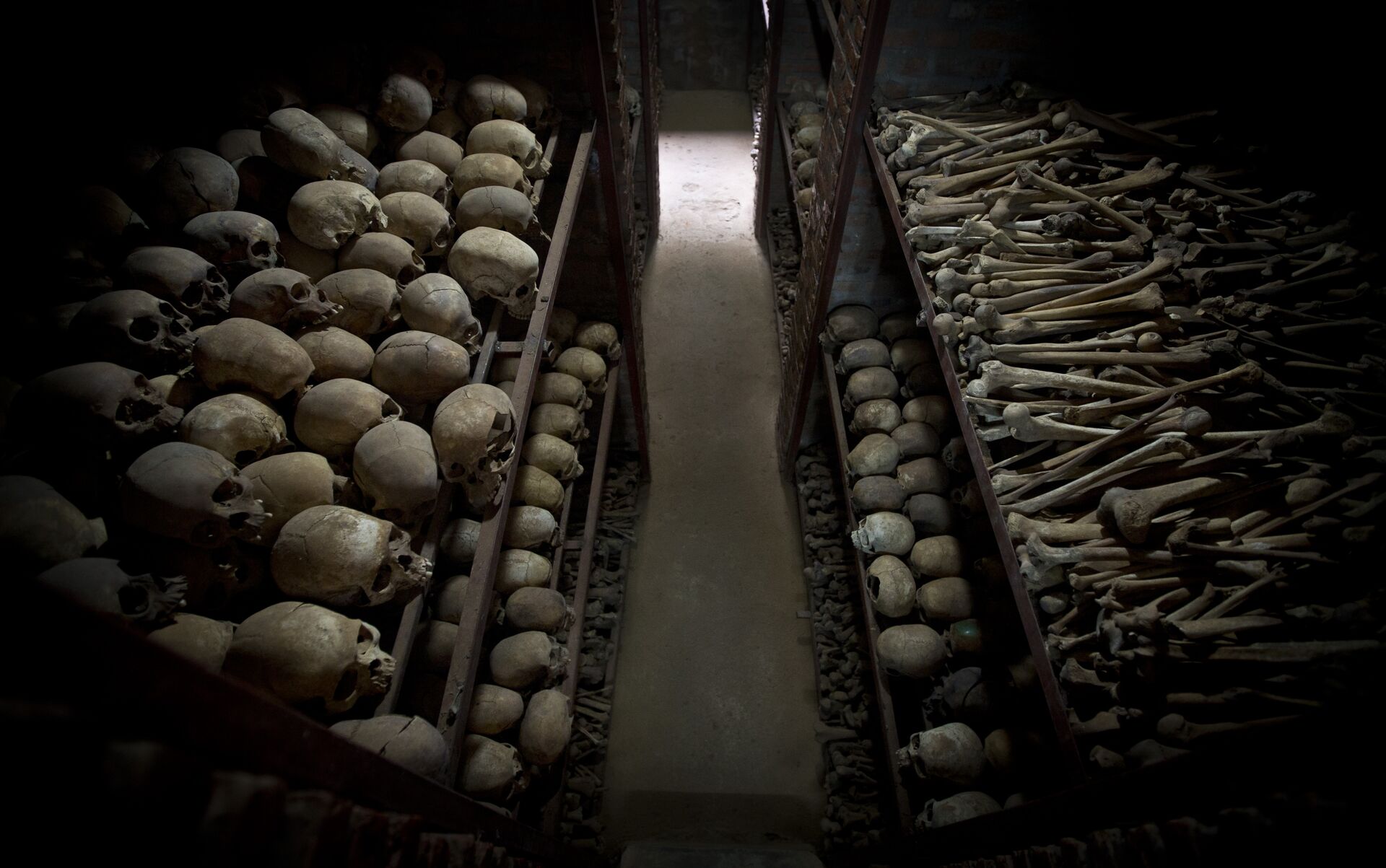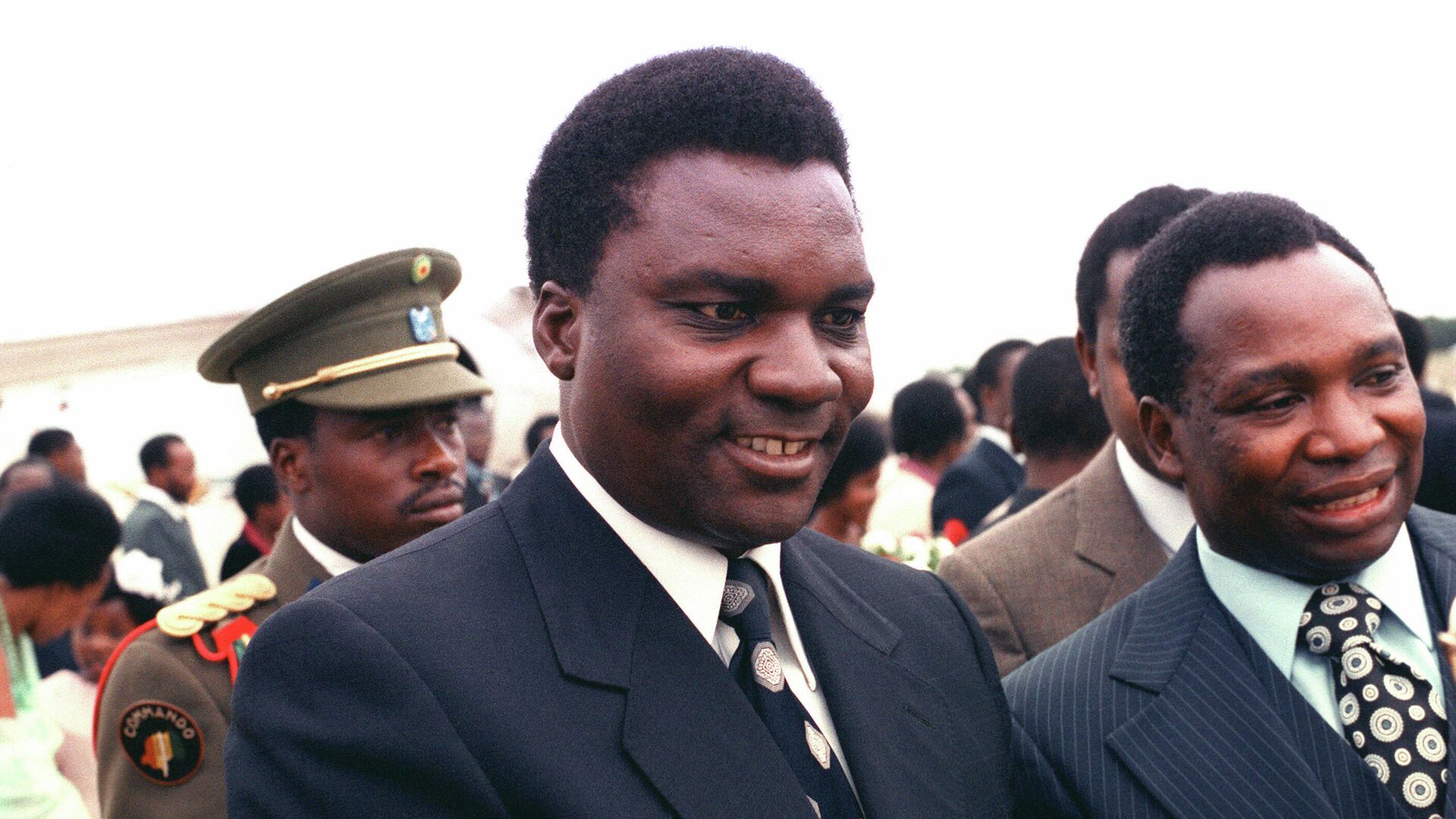French Court Ends Probe of 1994 Shootdown of Rwandan Leader’s Plane that Preceded Genocide
19:42 GMT 17.02.2022 (Updated: 11:36 GMT 23.11.2022)
Subscribe
A French high court has rejected an attempt by families of victims to reopen an inconclusive investigation into the 1994 downing of then-Rwandan President Juvenal Habyarimana’s aircraft that killed him and Burundian President Cyprien Ntaryamira, setting in motion the Rwandan genocide.
In 1998, four years after the aircraft was shot down on approach to Kigali International Airport, families of the French pilots killed in the crash opened a probe into the events in a French court.
The case significantly strained the relations between France and Rwanda after the judge, Jean-Louis Bruguière, issued arrest warrants for nine members of Rwandan President Paul Kagame’s entourage in 2006. Kigali accused Paris of trying to cover up its own support for Habyarimana’s Hutu-led government, which after his death initiated an organized massacre of more than 800,000 Tutsis and Twa.
Soldiers commanded by Kagame, who led the Tutsi Rwandan Patriotic Front, were blamed for the downing of Habyarimana’s Falcon 50 aircraft by a surface-to-air missile. However, an alternate theory proposed by other investigators, including the US Department of State and Kagame’s government, holds that Habyarimana was killed by Hutu extremists opposed to his recent negotiation of peace with the rebel RPF.

A picture taken 11 May 1994 in Buymba of Paul Kagame, leader of the Tutsi-led RPF (Rwandan Patriotic Front) shaking hands with an unidentified Canadian UN officer.
© AFP 2023 / Gerard Julien
However, the case was closed in 2018 after French prosecutors recommended the charges be dismissed because of insufficient evidence against the suspects. The families of Rwandans and Burundians killed in the attack, including Habyarimana's widow Agathe, then appealed for it to be reopened, but a Paris appeals court rejected their request in July 2020.
“The investigation was complete and sufficient charges did not exist against anyone for committing the alleged crimes, nor any other infraction,” the Court of Cassation, one of France’s supreme courts, found on Tuesday.
“Of course this decision disappoints the Rwandan plaintiffs, but in reality the harm has long since been done,” Philippe Meilhac, a lawyer for Agathe Habyarimana, told Agence France-Presse.
The April 6, 1994, killing of Habyarimana and 11 others, including Burundi’s President Ntaryamira and several of his ministers, was the final straw in decades of tensions that had boiled over into several civil wars between members of the majority Hutu and minority Tutsi ethnic groups in Rwanda.
During the years of Belgian colonial rule, a divide-and-conquer policy was used to turn the Hutus and Tutsis against each other by claiming that the Hutus were indigenous to the region and that the Tutsis were invaders who sought to displace them. Within hours of Habyarimana’s death, leaders of the radical Hutu Power movement set about assassinating Tutsi leaders and moderate Hutus using “kill lists” already drawn up, and soldiers and police established checkpoints the next day and conducted sweeps to check people’s national ID cards, which indicated the bearer’s ethnicity. Those who were Tutsi were executed. Later, gangs and mobs were organized and set upon the local population.

The skulls and bones of some of those who were slaughtered as they sought refuge inside the church, are laid out on shelves in an underground vault as a memorial to the thousands who were killed in and around the Catholic church during the 1994 genocide in Nyamata, Rwanda, Friday, April 4, 2014
© AP Photo / Ben Curtis
By July, up to 1.1 million people, including 800,000 Tutsis, or two-thirds of all Rwandan Tutsis, had been killed, along with one-third of the 30,000-strong Twa people. Only the RPF’s steady advance through the country and the capture of Kigali ended the killing.
In May 2021, French President Emmanuel Macron met with Kagame in Kigali in which he did not apologize for France’s support for the Rwandan government at the start of the genocide, he did acknowledge “the magnitude of our responsibilities.”
Two other French reports from earlier that year found the government of French President Francois Mitterrand bore “overwhelming responsibilities” for the genocide for continuing its divide-and-rule tactics while being fully aware of Hutu preparations for a genocide of Tutsis, as well as arming, advising and protecting the Hutu-led Rwandan government.
Burundi, to Rwanda’s south, was spared from the violence, despite President Ntaryamira’s death, being home to the same ethnic groups and another genocidal massacre of Tutsis by Hutus that ended just months earlier.
However, Hutus fleeing the conflict sought refuge in Zaire to the west, and a 1996 incursion into eastern Zaire against those forces by the RPF helped destabilize that country and set in motion an even larger conflict that came to be known as the two Congo Wars. Also known as Africa’s World War, the two Congo Wars consumed what became known as the Democratic Republic of the Congo and pulled in a majority of African nations, killing as many as 7 million people between 1996 and 2003.




